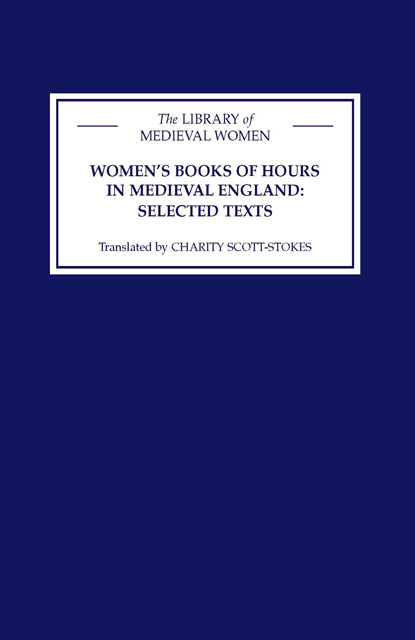Book contents
Introduction
Background, Development and Contents of the Book of Hours
Published online by Cambridge University Press: 18 March 2023
Summary
A medieval book of hours was in essence a miscellany of prayers, made for an individual, a family or a community. It was designed for use at home, and also, in some instances, at church. It was intended primarily for private devotion, that is, as a book enabling its users to direct their minds in faithful service to the worship of God in private prayer during the course of their daily lives. There was also a strong focus on the Blessed Virgin Mary. It was in the main a religious compilation, yet it could also include secular, or worldly, items. The manuscripts were often beautifully illustrated, sometimes with embroidered or bejewelled covers, and even bags to keep them in – valuable, holy and protective in their material substance as well as in the prayers enclosed.
This introduction offers background information designed to put the book of hours in context, followed by discussion of the standard and supplementary textual contents, the visual aspect and music, and some observations on the original languages of the texts.
*
Since the Virgin Mary features very prominently in the book of hours, and the core text of the book is the Little Office, or Hours, of the Blessed Virgin (text 1), it is useful to review the growth of narratives and veneration of Mary from the early centuries of Christianity to the late Middle Ages.
Mary is the central figure in the New Testament narrative of events in Nazareth and Bethlehem leading up to the Nativity of Jesus, as recounted most fully in the gospel of St Luke. She received the salutation of the angel Gabriel at the Annunciation, conceived and gave birth to Jesus, and nursed the child as the shepherds and Magi, or three kings, came to adore him. She presented him in the temple forty days after his birth, where Simeon recognised him as the saviour of mankind and made prophecies regarding his future greatness, and the suffering in store for both Jesus and Mary. Mary's husband Joseph fled with the young mother and the baby Jesus to Egypt, to escape the persecution of King Herod, and returned with them to Nazareth after a period of years. When Jesus was twelve years old, Joseph and Mary lost him in Jerusalem, and he was found in discussion with the learned in the temple.
- Type
- Chapter
- Information
- Women's Books of Hours in Medieval England , pp. 1 - 24Publisher: Boydell & BrewerPrint publication year: 2006



